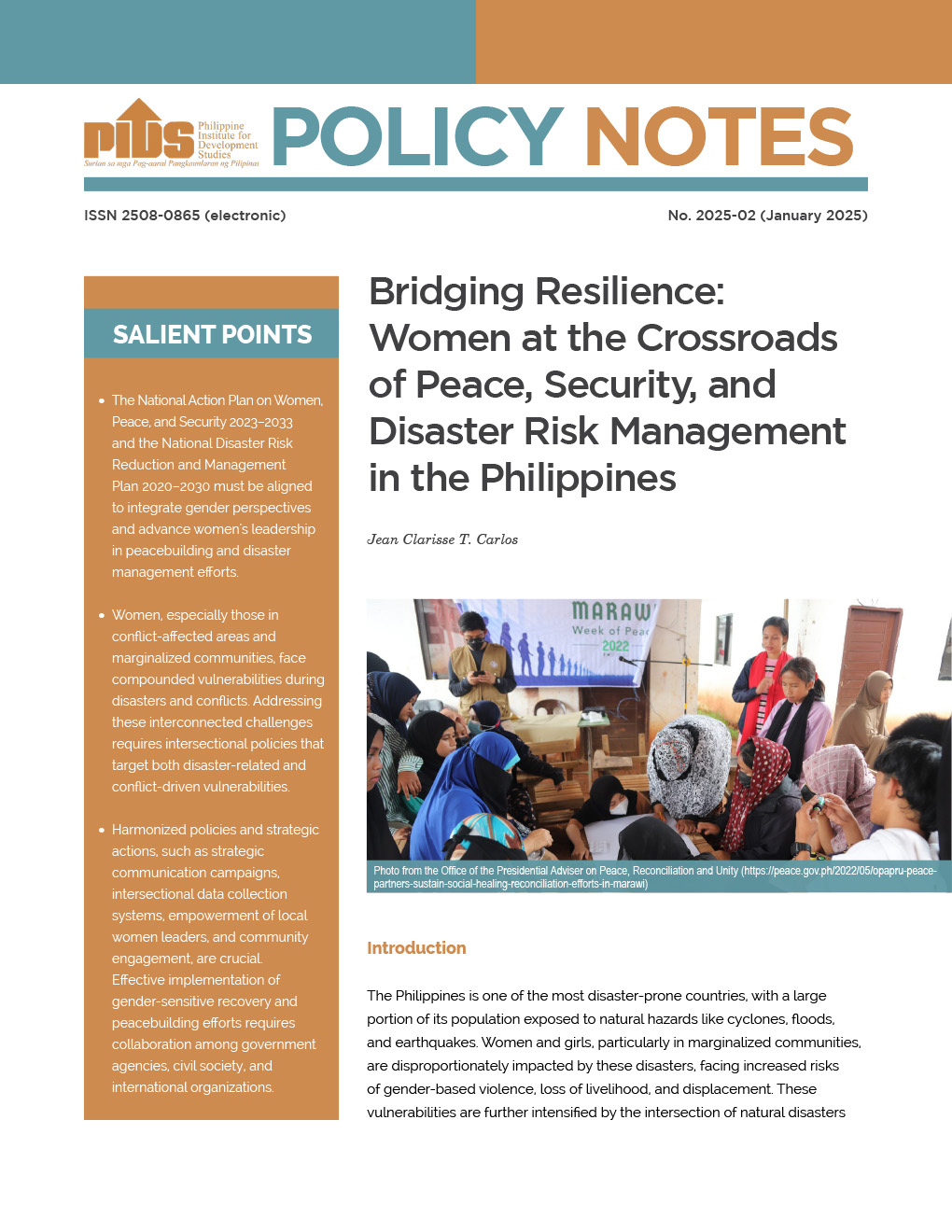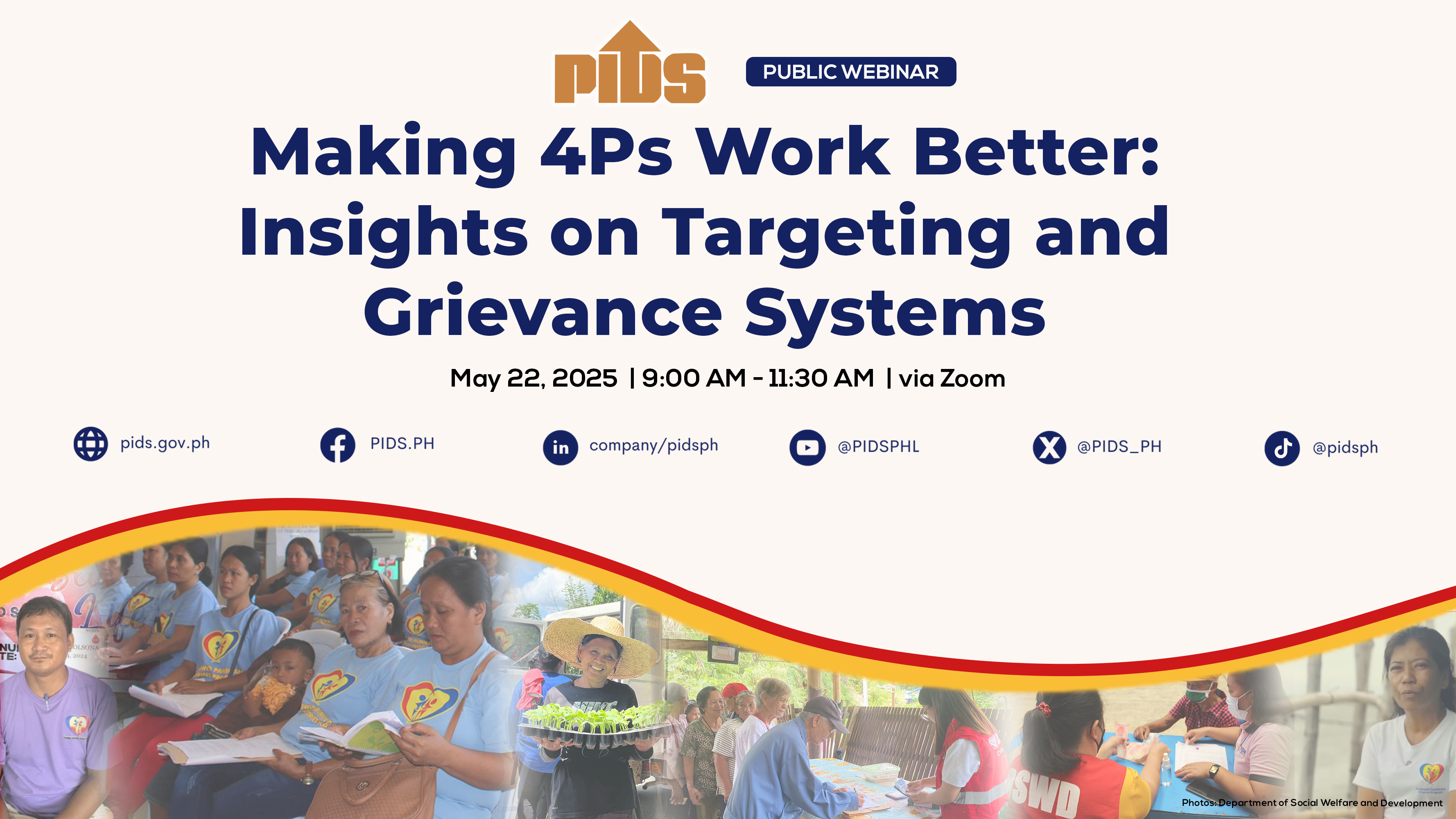WOMEN’S participation in the workforce barely improved in the past 30 years, according to a study released by the Philippine Institute for Development Studies (PIDS).
In a discussion paper titled “Examining the Women’s Low Labor Market Participation Rate in the Philippines: Is Housework the Missing Link?,” PIDS Senior Research Fellow Connie Bayudan-Dacuycuy said the labor force participation rate (LFPR) in the country only improved by 3 percentage points from 45 to 48 percent in the 1990s.
Some of the factors that affect women’s LFPR, Dacuycuy said, include “the amount of time women spent on housework that tends to be dictated by gender identity.”
“They (married women) are less likely to work when they spend more time on housework but are more likely to work when their spouses spend more time on non-market production,” Dacuycuy said.
“The time spent on housework by female respondents is negatively correlated with household size and positively correlated with the presence of toddlers,” she also said.
The research found that when married women and their spouses spend 10 hours for household chores, around 60 percent of males still participate in the labor force while for women, the rate is lower at 53 percent.
Dacuycuy’s findings also showed that women’s participation in the labor market significantly increases when they are “completely disengaged from housework.”
Data showed that women’s participation increases by around 42 percentage points while the men’s participation only increases by around 25 percentage points.
However, when males and females spend 20 hours and their spouses devote none on housework, women’s probability of working decreases by 43 percentage points; while for males, there’s a decrease of 34 percentage points.
“Even though the labor market participation of both men and women is affected, that of the women is more so. This is shown in the bigger increase in the women’s market work participation when they do not engage in non-market work and in the bigger decrease when their spouses do not share in the household production. This provides evidence that housework acts as a major constraint in the realization of the full economic contribution of men and women in the country,” Dacuycuy said.
Dacuycuy said due to the findings of the research, there is a need to establish that women’s contribution to society does not necessarily have to be in the labor market.
She also said engaging in unpaid work and the care economy are life’s choices for some Filipinos but are considered life roles for others. She said this highlights the need to have a deeper understanding of the motivations and preferences of men and women when to do market and non-market work.
Further, Dacuycuy said the Philippine Statistics Authority (PSA) should seriously consider including time use questions as riders to its existing surveys such as the Labor Force Survey.
“The lackluster participation of women in the labor force is a continuing concern and this is reflected in the space devoted to it in the Philippine Development Plans and in legislations designed to support working women,” Dacuycuy said.
Stopped job scouting
In January, the PSA reported that nearly 11 million Filipinas have stopped looking for jobs in January as they were forced to just stay in the house and perform their domestic duties.
PSA Assistant National Statistician Wilma A. Guillen told BusinessMirror that the there were a total of 28.87 million Filipinos who are not in the labor force (NITLF) in January 2019. This was a 7.64 percent increase from the NITLF of 26.82 million in January 2018.
Nearly 40 percent of the total or 10.569 million is composed of women who preferred to stay at home to attend to their duties to their families and own households. However, this was a 2.15-percent contraction from the 10.8 million posted in January 2018.
The total of those in the NITLF due to household or family duties reached 11.604 million, a 0.16-percent increase from the 11.585 million in January 2018. Only 1.034 million of these individuals were males, a 32.06 percent growth from the 783,000 recorded in January 2018.
Data also showed that some 10.119 million of the NITLF included those aged 15 and over who are not looking for work because of schooling. This was a 9.22-percent growth from the 9.265 million recorded in January 2018.
Further, Guillen said, those aged 15 to 24 years old who were NITLF reached 9.875 million in January 2019, a 6.58-percent growth from 9.265M in January 2018.
Apart from schooling, other reasons for why a lot of Filipinos are NITLF: too young/old or retired/permanent disability; waiting for rehire/job recall; bad weather; temporary illness/disability; awaiting results of previous job application; tired/believe no work available; looking for work but not available; and other reasons.











